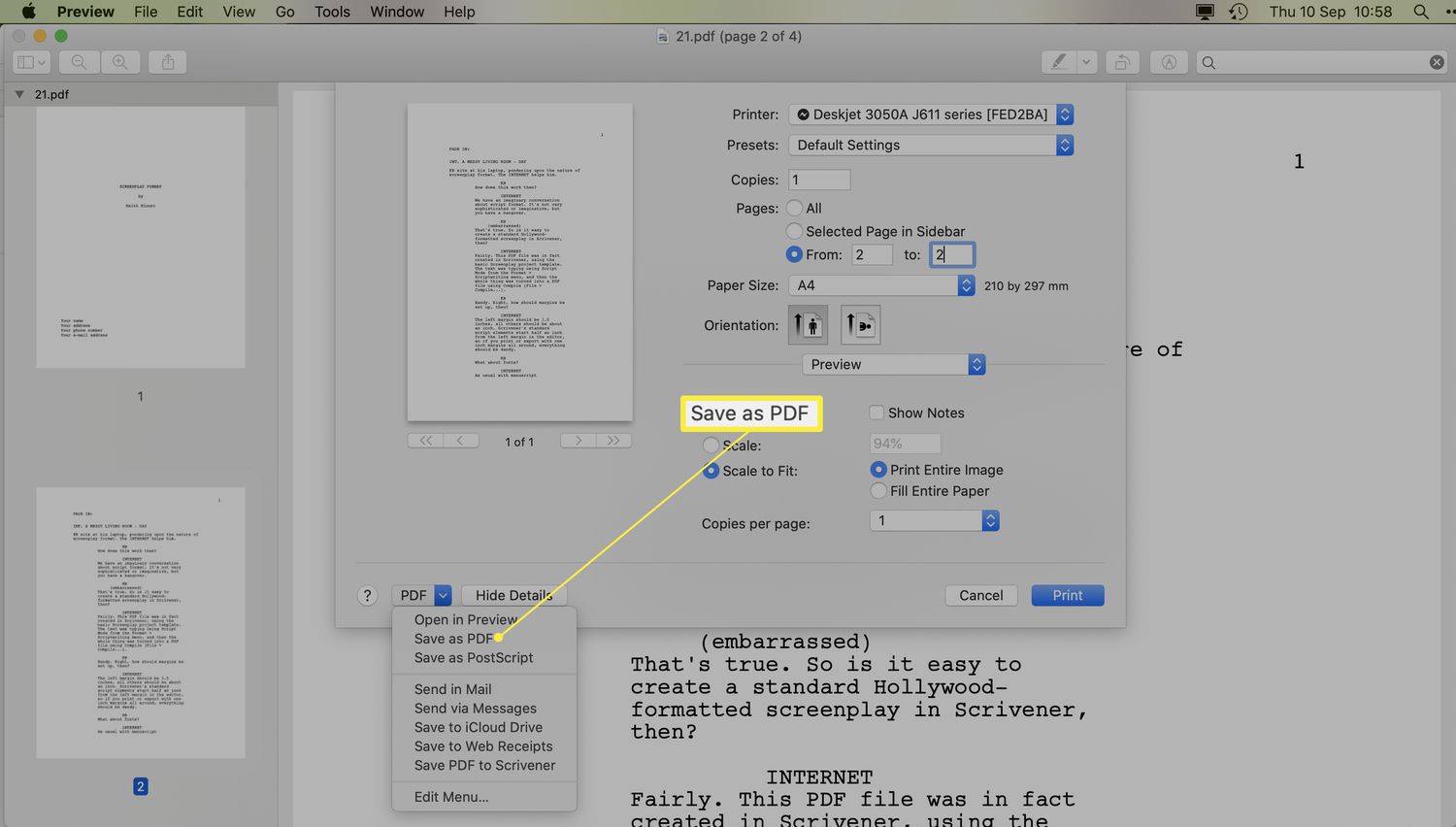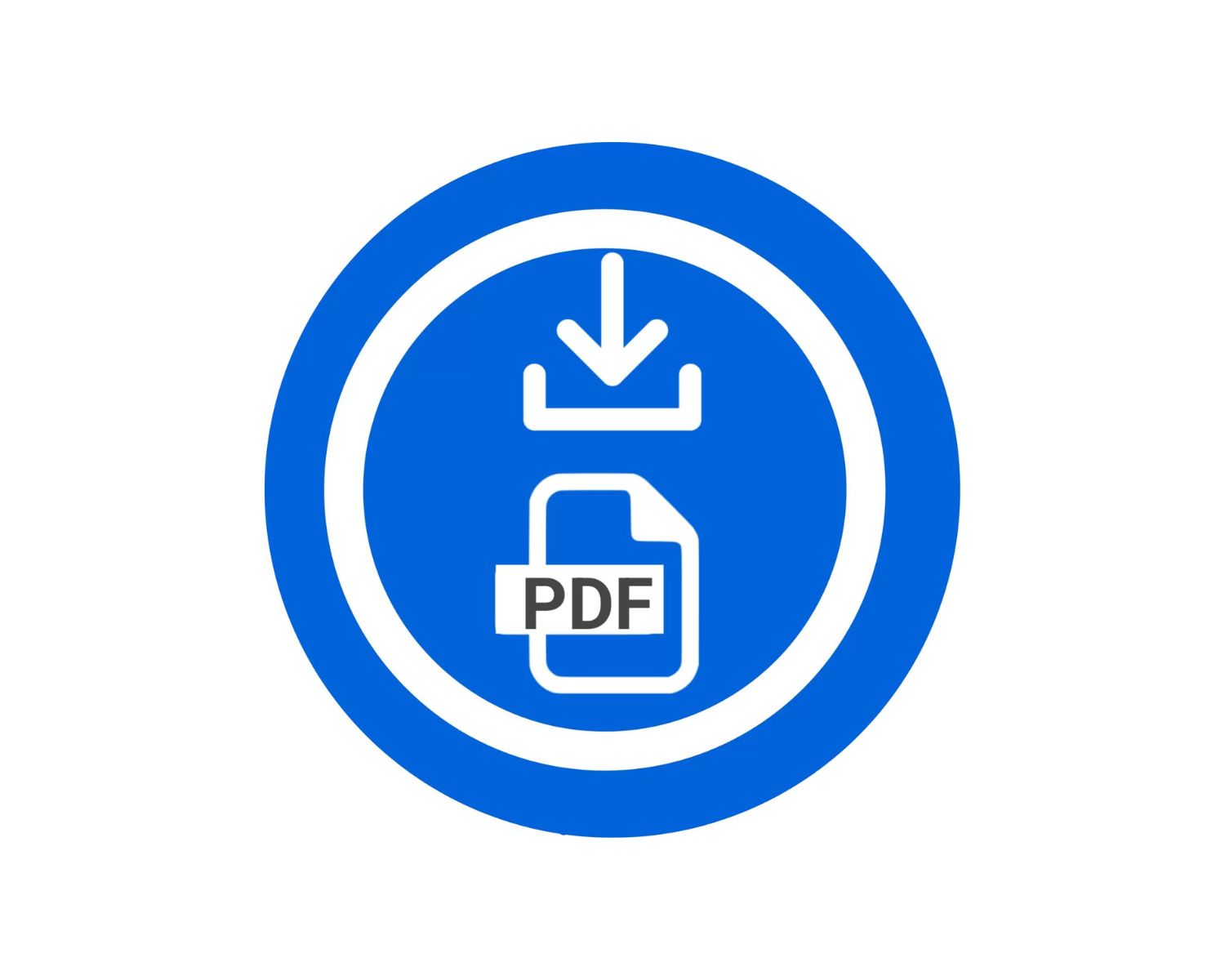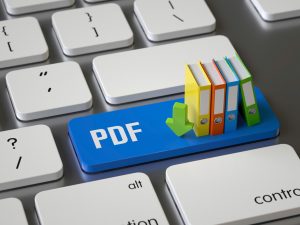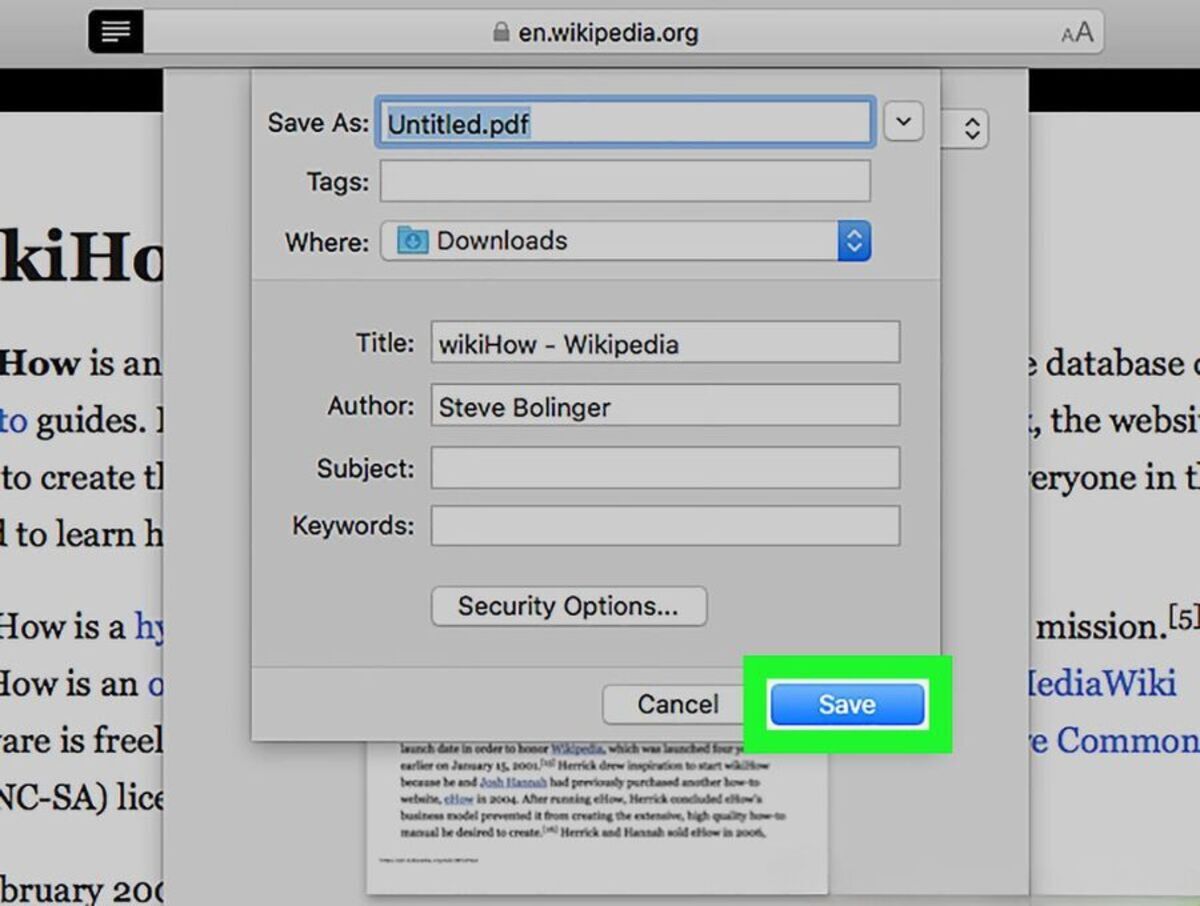Introduction
Welcome to our guide on how to download just one page of a PDF document. Whether you’re working on a research paper, a presentation, or simply need to extract a specific page from a lengthy PDF file, we’ve got you covered. In this article, we will explore several methods to help you save time and effort by downloading only the page you need.
PDF files are widely used to share and distribute documents due to their compatibility and security features. However, it can be frustrating when you have a large PDF file and only require a single page from it. Instead of downloading the entire document and searching for the relevant page, we will show you various techniques to streamline the process.
From saving the page as a new PDF file to utilizing specialized software and online tools, you’ll discover simple and effective ways to extract specific pages. We will explain how to accomplish this using different methods, including built-in features of PDF readers, online extraction tools, and even using Google Chrome’s print feature.
No matter which method you choose, our goal is to provide you with clear instructions and step-by-step guidance to make the process as smooth as possible. These methods are suitable for both Windows and Mac users, ensuring accessibility across various platforms.
Whether you’re a student, researcher, or professional, being able to extract single pages from a PDF document can be a valuable time-saving technique. By following the methods covered in this guide, you’ll have the flexibility to retrieve the specific information you need without the hassle of managing entire files.
Now that we’ve provided an overview of what to expect, let’s dive into the step-by-step methods that will allow you to download just one page of a PDF.
Method 1: Save Page as PDF
If you’re using a web browser to view the PDF file, saving the page as a PDF is a quick and straightforward method. Most modern browsers offer this feature, allowing you to easily download the desired page as a separate PDF file. Here’s how to do it:
- Open the PDF file in your preferred web browser.
- Navigate to the specific page you want to download.
- Click on the browser’s menu icon (typically represented by three vertical dots) located at the top right corner of the window.
- In the menu that appears, select the “Print” option. Alternatively, you can use the keyboard shortcut “Ctrl + P” (Windows) or “Command + P” (Mac).
- A print dialog box will pop up. Look for the “Destination” section or dropdown menu within the dialog box.
- From the dropdown menu, choose “Save as PDF” or a similar option, depending on your browser.
- Customize any additional settings such as page size, orientation, or margins if needed.
- Click the “Save” or “Print” button to save the selected page as a PDF file to your desired location on your computer.
Once the download is complete, you’ll have a new PDF file that contains only the page you selected. This method is ideal for users who primarily view PDF files online and want to extract pages without the need for additional software.
Now that you know how to save a specific page as a PDF using your web browser, let’s move on to the next method, which involves extracting the page using Adobe Acrobat.
Method 2: Extract Page using Adobe Acrobat
If you have Adobe Acrobat installed on your computer, you can take advantage of its powerful features to extract a single page from a PDF file. Adobe Acrobat is a popular PDF editing software that provides advanced functionality for manipulating PDF documents. Follow the steps below to extract a page using Adobe Acrobat:
- Open the PDF file you want to extract a page from using Adobe Acrobat.
- In the top toolbar, click on the “Pages” tab to access the page management options.
- Within the “Pages” tab, locate and select the specific page you want to extract. You can use the page thumbnails on the left-hand side to identify and select the desired page.
- After selecting the page, right-click on it and choose the “Extract Pages” option from the context menu.
- A dialog box will appear, giving you the option to select the range of pages to extract. By default, it should show the single page you selected. If you want to extract multiple pages, enter the appropriate page range.
- Ensure that the “Extract Pages as Separate Files” option is checked to create a new PDF file that includes only the extracted page(s).
- Click on the “OK” button to start the extraction process.
- Choose a location on your computer to save the extracted page(s) as a new PDF file.
- Once the extraction is complete, you can close Adobe Acrobat and access the newly created PDF file that contains only the desired page(s).
Adobe Acrobat offers a comprehensive suite of tools for managing, editing, and manipulating PDF documents. While it is a paid software, its extensive features make it a valuable investment for users who frequently work with PDF files and need advanced capabilities for extracting specific pages.
Now that you’ve learned how to extract a page using Adobe Acrobat, let’s explore the next method, which involves using various online tools to accomplish the same task.
Method 3: Using Online Tools
If you prefer a more convenient and browser-based approach to extract a single page from a PDF, online tools can be a great solution. There are numerous websites that offer free and user-friendly tools specifically designed for extracting pages from PDF files. Follow the steps below to use an online tool for this purpose:
- Open your web browser and search for “PDF page extractor” or “online PDF page extractor” to find a suitable online tool.
- Select a reputable online tool from the search results. Ensure that it offers the page extraction feature.
- Upload the PDF file you want to extract a page from. Typically, you can either drag and drop the file into the website’s interface or use a file upload button.
- Once the PDF file is uploaded, the online tool will display a preview of its contents, including all the pages.
- Select the page you want to extract by clicking on it or specifying the page number in the provided field.
- Review any additional options or settings provided by the online tool. This may include selecting a specific output format, adjusting the page size, or setting the desired resolution.
- Click on the “Extract” or “Download” button to initiate the page extraction process.
- The online tool will process the request and generate a new PDF file that contains only the extracted page.
- Finally, download the extracted page by clicking on the provided download link or button.
Using online tools can be a quick and convenient method, especially when you don’t have access to PDF editing software or prefer not to install any additional applications on your computer. However, it’s important to choose reputable online tools and be cautious when uploading files containing sensitive information.
Now that you’ve discovered an alternative method using online tools, let’s explore another method that leverages the print feature in Google Chrome to extract a single page from a PDF.
Method 4: Using Google Chrome Print Feature
If you’re a Google Chrome user, you can utilize the browser’s built-in print feature to extract a single page from a PDF file. This method is straightforward and doesn’t require any external tools or software. Follow the steps below to extract a page using the Google Chrome print feature:
- Open the PDF file in Google Chrome by dragging and dropping it into a new tab or using the browser’s file “Open” option.
- Navigate to the specific page you want to extract within the PDF document.
- Next, click on the three vertical dots at the top right corner of the browser window to open the Chrome menu.
- In the menu, select the “Print” option, or you can use the keyboard shortcut “Ctrl + P” (Windows) or “Command + P” (Mac).
- A print dialog box will appear, showing a preview of the page to be printed.
- Within the print dialog box, locate the “Destination” section and click on the “Change” button.
- A list of available destinations will appear. Instead of selecting a physical printer, choose the option to “Save as PDF”.
- Customize any additional print settings such as page size, layout, or margins if necessary.
- Make sure to specify the page range to only include the desired page or pages.
- Click on the “Save” or “Print” button to save the selected page as a PDF file to your computer.
After completing these steps, you’ll have a new PDF file containing only the page you wanted to extract. The Google Chrome print feature provides a simple and accessible method for extracting pages without the need for additional software or online tools.
Now that you’ve mastered the Google Chrome print feature method, let’s move on to the final method, which involves using dedicated PDF editors to extract a single page.
Method 5: Using PDF Editors
If you frequently work with PDF files and require advanced editing capabilities, using dedicated PDF editing software is an excellent option. PDF editors offer a range of features, including the ability to extract specific pages from a PDF document. Here’s how you can use a PDF editor to extract a single page:
- Open the PDF file you want to extract a page from using your preferred PDF editor. There are many options available, such as Adobe Acrobat, Nitro Pro, Foxit PhantomPDF, and more.
- Once the document is open, navigate to the page you want to extract.
- Most PDF editors provide a “Pages” or “Organize” tab that allows you to manage the document’s pages.
- Within the “Pages” tab, select the specific page you want to extract.
- Look for an “Extract” or “Extract Pages” option within the PDF editor’s toolbar. Click on this option to initiate the extraction process.
- You may be prompted to specify any additional settings, such as the output format or file name for the extracted page. Adjust these settings as desired.
- Proceed with the extraction process, and the PDF editor will create a new document containing only the extracted page(s).
- Save the extracted page(s) to your preferred location on your computer.
Using a PDF editor provides extensive functionality for editing and manipulating PDF files. While some PDF editors are available for free, many offer more advanced features as part of a paid version. Consider your specific needs and budget when choosing a PDF editor.
With dedicated PDF editing software, extracting a single page from a PDF becomes a breeze. Now that you’re familiar with this method, we have covered various techniques to help you download just one page of a PDF file. Choose the method that suits your preferences and needs, and enjoy the efficiency and flexibility of extracting specific pages.
Conclusion
Extracting a single page from a PDF file can save you time and effort, especially when you only need specific information. Throughout this guide, we have explored different methods to download just one page of a PDF.
We started with the method of saving a page as a PDF using web browsers, which is a quick and simple solution for online viewing. Then, we discussed extracting pages using Adobe Acrobat, a powerful PDF editing software that offers advanced features for manipulating PDF documents.
Next, we explored the convenience of using online tools. These browser-based tools provide an accessible option for extracting pages without the need for additional software installation.
In addition, we covered the Google Chrome print feature, which allows users to extract specific pages directly from the browser without specialized tools. Finally, we discussed the option of using dedicated PDF editors, which provide comprehensive editing capabilities and page extraction features.
By following any of these methods, you can efficiently extract a single page from a PDF file, allowing you to retrieve the necessary information without the hassle of managing the entire document.
Remember to choose the method that best suits your needs, taking into consideration factors such as accessibility, convenience, and the level of functionality required.
Now that you’re equipped with the knowledge of these various extraction methods, you can confidently navigate through PDF documents and effortlessly extract the pages you need for your projects, research, or presentations.
So go ahead and give these methods a try, and enjoy the flexibility and convenience of downloading just one page from a PDF file!
















![18 Best Online PDF Readers and Editors in 2022 [100% Working]](https://robots.net/wp-content/uploads/2020/06/PDF-image-300x196.jpg)








